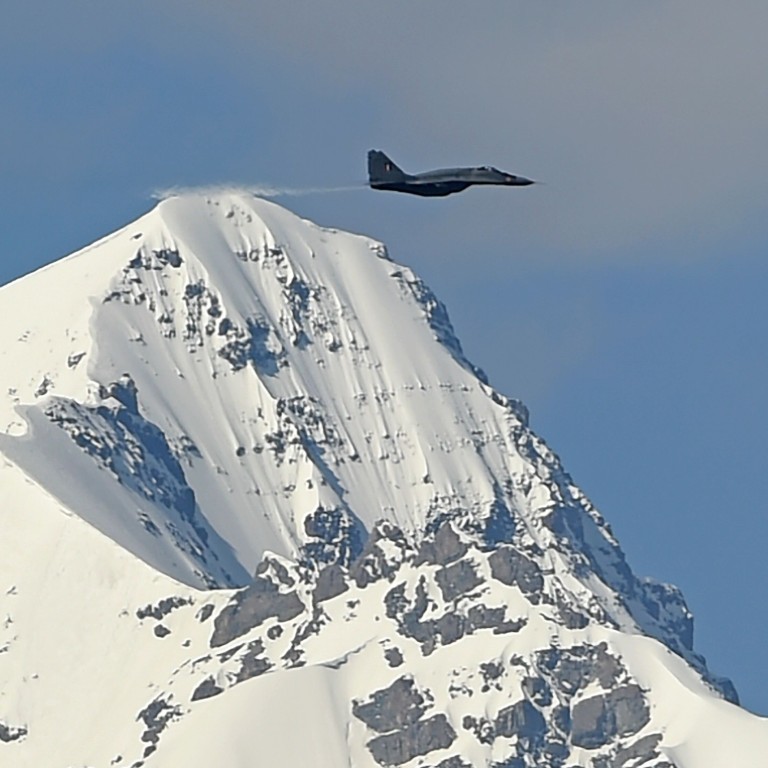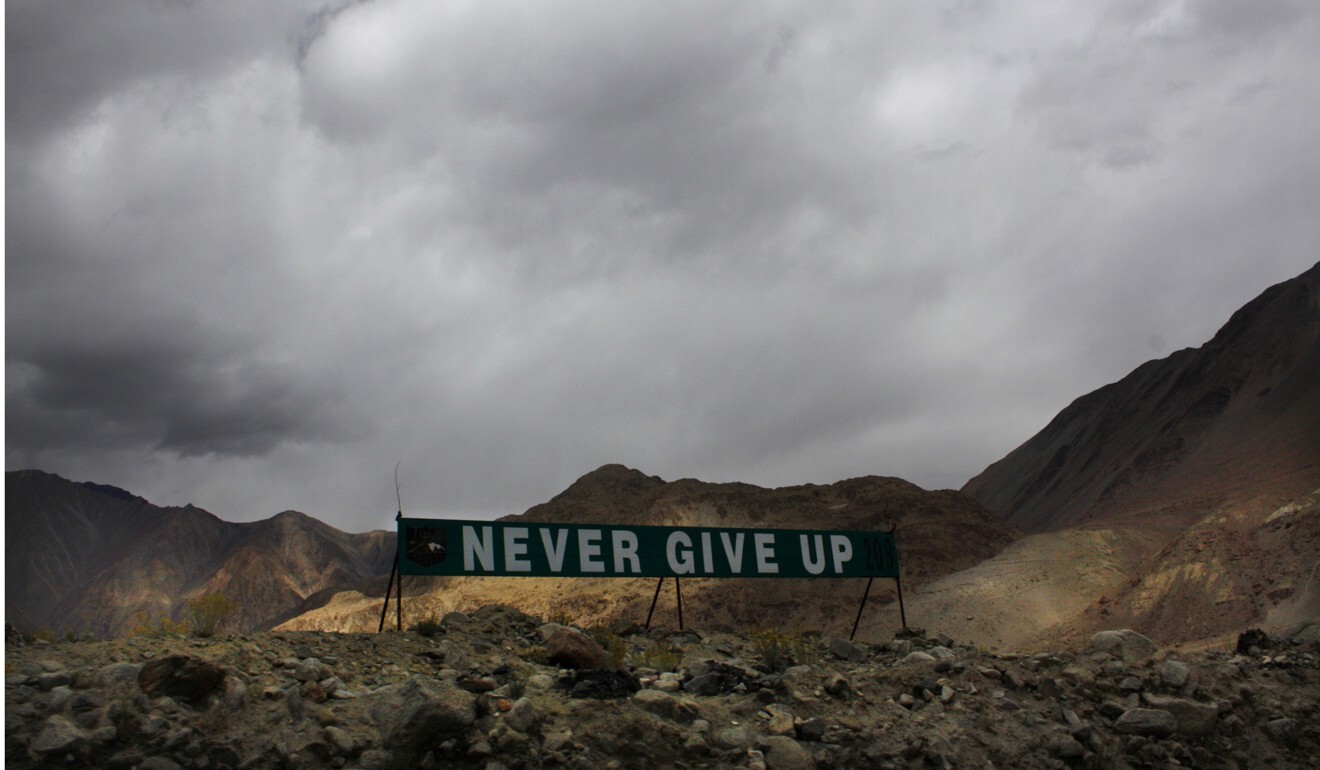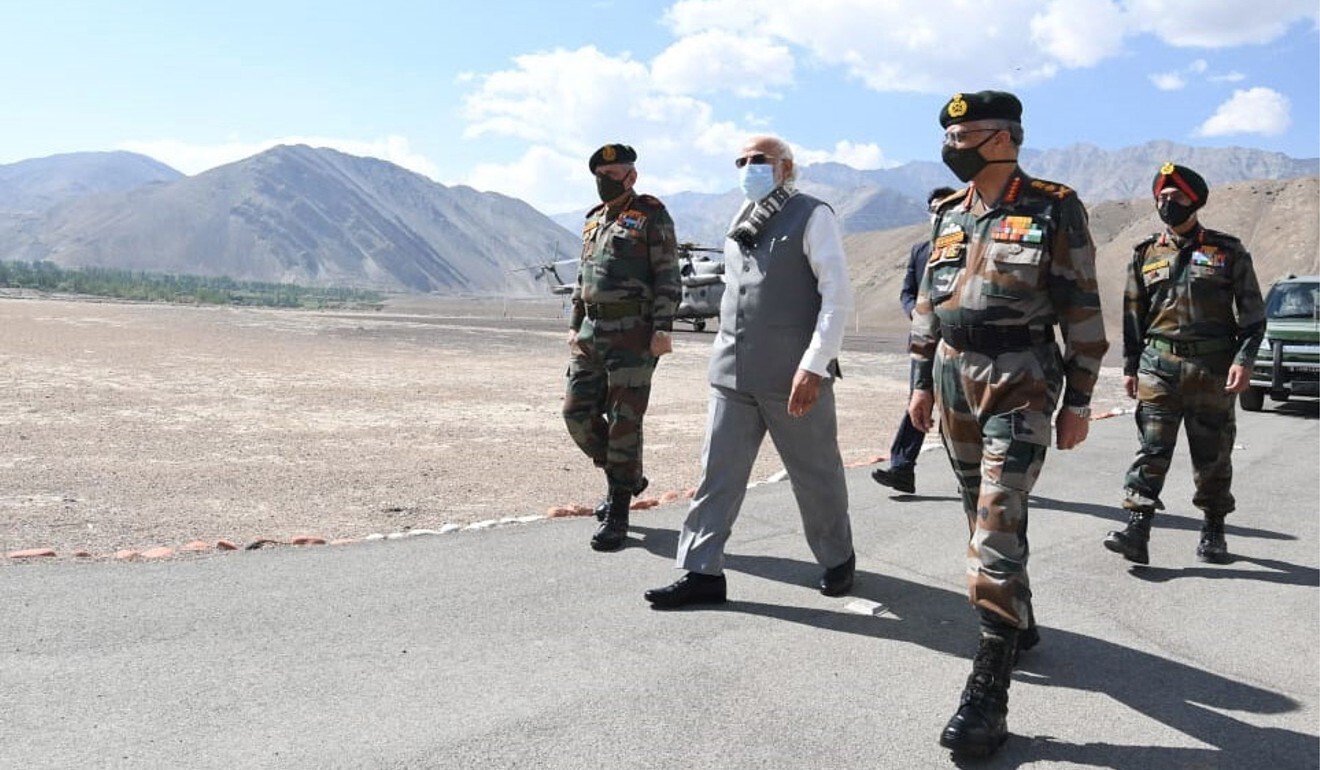
Winter is coming and China-India border dispute shows no sign of resolution, Indian analysts warn
- The stand-off between Chinese and Indian troops along the Line of Actual Control is in its 13th week, and disengagement seems to have stalled
- Indian observers say it may stretch into the harsh Himalayan winter, when poor visibility may spark more clashes and lives may be lost to the cold
There have been nine rounds of diplomatic and military talks, including two meetings between Chinese Foreign Minister Wang Yi and his Indian counterpart S Jaishankar, as well as Wang’s talks with India’s National Security Adviser Ajit Doval.
On Tuesday evening, Chinese foreign ministry spokesperson Wang Wenbin said the disengagement between both militaries “at most places” along the border was complete but hinted that the situation was not entirely resolved yet.
At least 20 Indian troops and an unspecified number of Chinese soldiers were killed in a clash on June 15 in the Galwan river valley along the 3,488km undemarcated border known as the Line of Actual Control (LAC) in Ladakh, resulting in a massive troop and artillery build-up by both countries.
“The current situation continues to develop in the direction of easing and cooling,” Wang said.
He added that the two sides would continue to hold talks with each other at the military level.
“We hope that the Indian side and China will meet each other halfway, implement the consensus reached by both sides and jointly maintain peace and tranquility.”
How India and China’s deadliest clash in decades came about
Indian military sources implied troops could be withdrawn from the forward positions they had been occupying but “de-escalation” in the form of reducing the military build-up would take some time.
While New Delhi did not react to Wang’s comments on Tuesday, Indian analysts and military veterans are concerned that the impasse is showing no signs of ending soon.
Indian Defence Minister Rajnath Singh recently said he could not “guarantee the outcome” of the talks between the two countries. This was followed by Indian media reports citing top security sources claiming that the border disengagement and de-escalation of tensions had stalled because Chinese soldiers refused to “move back as per the agreed terms”.
Earlier this month, the Indian defence ministry gave blanket approval to the armed forces to urgently purchase equipment worth US$40 million “due to the prevailing situation along the Northern Borders”. The acquisitions, which have not been officially announced, could include a wide range of weaponry, including drones, surface-to-air missiles and assault rifles, according to reports.

Sanjay Kulkarni, a retired Indian Army lieutenant general who served at Siachen Glacier, the world’s highest battlefield at over 6,700 metres and temperatures as low as -70 degrees Celsius, said visibility during the winter can be less than a metre, which “increases the chances of patrol parties bumping into each other”.
“If the agreements are not made and troops intercept each other’s patrolling, they could clash again or capture each other’s troops and create a vicious environment,” he said.
Syed Ata Hasnain, another retired lieutenant general who was the commander of the Srinagar-based 15 Corps, the Indian Army infantry unit that handles military operations in Kashmir, called it a “no war, no peace” situation that was likely to stretch into the winter.
“The Chinese incursion is aimed to compromise India’s strategic confidence and is part of a larger Chinese geopolitical game plan to set the narrative in a post-Covid world order,” he said.
Changing Tack
Since early May, Indian and Chinese troops have faced off at various points along the LAC, including the Galwan river valley, Hot Springs, Gogra, Depsang Plains and Pangong Tso, the strategically-located lake which both countries claim.
India wants control over all these regions, as they lie parallel to its Darbuk-Shyok-Dault Beg Oldie (DSDBO) highway, that passes along the LAC. The all-weather highway connects Leh to the Karakoram Pass that acts as a buffer between Ladakh and China’s Xinjiang Autonomous Region. The region’s proximity to the Chinese-controlled Aksai Chin region makes the area of great significance for China, too.

On Friday, after the latest round of diplomatic talks held by the Working Mechanism for Consultation and Coordination on India-China Border Affairs, the Chinese foreign ministry said in a statement that “positive progress” towards disengagement was made. It added that the two countries will continue to “maintain bilateral military and diplomatic dialogues and consultations … properly handle remaining issues on the ground and promote further cooling of the border situation”.
Sources say a fifth round of military-level talks between Chinese and Indian commanders could be held soon.
Indian Army Chief MM Naravane said earlier this month the disengagement of troops had begun and described the military talks as being “very fruitful”, while news reports in the Indian media subsequently quoted unnamed army officials as saying that the process would be completed “in the next few days”.
Why mutual distrust will continue to shape India-China border dispute
But in the next fortnight, the process went haywire.
The first admission of this came on July 16, when the Indian Army released a statement saying that the disengagement process “was intricate and requires constant verification”. The next day, the Indian defence minister, while visiting forward positions in Ladakh, said the outcome of the talks with China could not be guaranteed, “but not one inch of land can be taken away by any power”.
Last week, a news report said the disengagement process had been paused, that the Chinese troops had “refused” to disengage at Gogra and Hot Springs, and that the People’s Liberation Army was “in not in a mood to de-escalate”.
The Indian Army did not respond to repeated requests for a comment.
The bottom line is, the Chinese are not going away anywhere.
All this makes it clear that the process has halted, said Manoj Joshi, an author and former member of India’s National Security Advisory Board, a group of experts who provide guidance to the Indian government on security matters.
“I think the Chinese are differentiating between what they felt were contested parts of the LAC such as Pangong and Depsang, and what were clearly on the Indian side.” Joshi said this meant Chinese troops would “continue to occupy” areas that were contested and had no clear Indian claim – something that is certain to rankle India.
Not An Easy End
There is a growing realisation among observers like Joshi that the border stand-off may not end any time soon.
A senior military officer, who previously served in the region, said the genesis of the dispute lay in the Indian Home Minister Amit Shah’s statement in Parliament last year, reiterating India’s claims to Aksai Chin, and that India’s constitution extended to Aksai Chin.
“The assertion could have triggered the Chinese aggression to secure Aksai Chin permanently, with an eye on the China-Pakistan Economic Corridor. The bottom line is, the Chinese are not going away anywhere,” the official said.
The real heat in India-China ties? Sichuan dosas, chicken Manchurian
Kulkarni, who served in the Indian Army for 39 years, said he believed the PLA would find the harsh winter weather and terrain more difficult than the Indian Army.
“Indian troops have much more experience in such conditions,” he said.
“In some ways, if the stand-off lasts, then this will be like creating a Siachen for China, where more lives are lost due to climatic conditions,” he said, referring to the conflict between India and Pakistan to gain control over the Siachen Glacier, which lasted from 1984 till the early 2000s.
This, Hasnain said, was why the two countries had to ensure that the military talks resumed. “These talks are crucial because they set the right environment for diplomatic talks to take place smoothly.”

